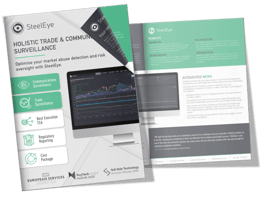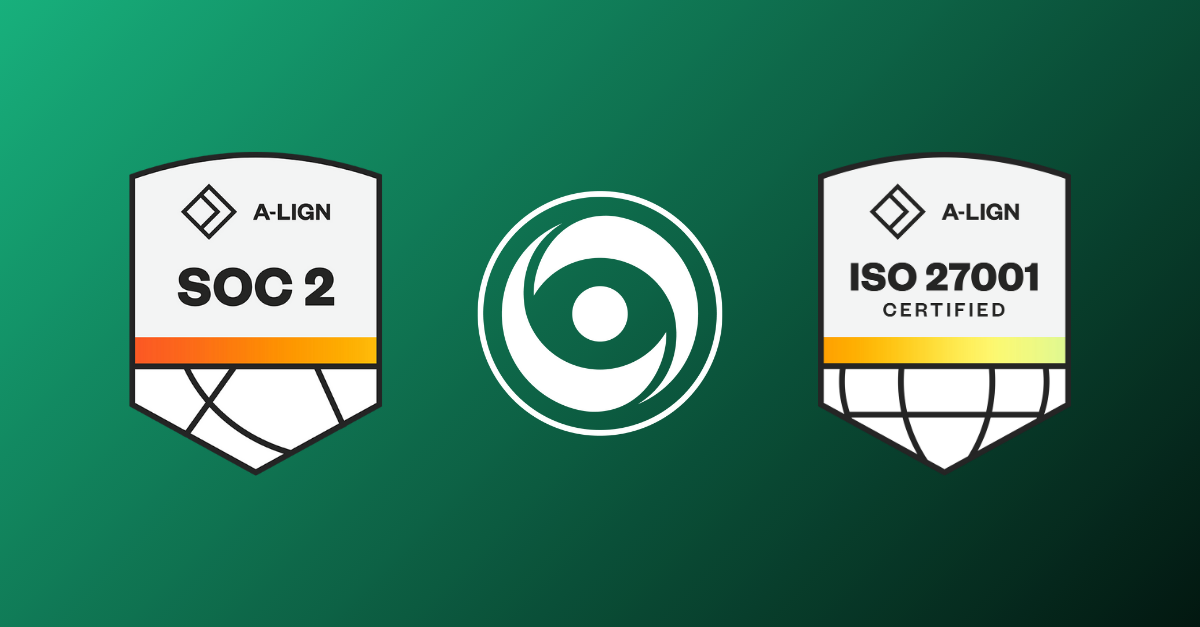We recently wrote the first of a two-part article about trade surveillance requirements. The first piece outlined the key things you should know about trade surveillance, your regulatory responsibilities (for the likes of MiFID II, MAR and Dodd-Frank) and expectations from the regulators. In this second part, we focus on the top trade surveillance challenges, how to overcome them and best practices.
As the range of financial instruments available increases, so does the complexity of trading and compliance. Global regulations are becoming more demanding and the ongoing Covid-19 pandemic has accelerated the need for modernisation of trade surveillance programmes and technology, to reliably monitor transactions and identify market abuse.
Read on to learn more about the key challenges with trade surveillance, or if you’d like to read the initial article, click on the following link: Trade Surveillance Requirements Part 1: Key Things You Need to Know.
Part 2: Key trade surveillance challenges and best practices
What are the common Trade Surveillance challenges for firms today?
In Part 1 of our trade surveillance requirement article, we mainly focused on regulatory requirements, something that has presented a lot of challenges to firms for some time. Here are some of the other common trade surveillance challenges that firms are experiencing:
- Managing the volume of data – Many firms are still trying to carry out trade surveillance using scattered data which is often stored on-premise. As the volume of trade and communications data continues to increase, this approach is rapidly becoming unsustainable.
Data-driven financial services compliance – Understanding the opportunity >
- Monitoring and analysing the data – As the volume of data grows, the more challenging it is to actively oversee and analyse large volumes of scattered on-premises data. These can be complex, resource-intensive, and slow.
Driving decision-making from data - 5 trends firms should look out for >
- Performing trade reconstruction – Firms are expected to be able to normalise trade and communications data to analyse the circumstances surrounding different trading activities and undertake investigations, if necessary. Many firms are still doing this manually, bringing together spreadsheets and data from point solutions.
Trade reconstruction: a growing pain point >
When it comes to trade surveillance, firms can find themselves trapped in their legacy data and technology architecture, unable to evolve. Some firms struggle to harvest and analyse trade and communications data from their multiple solutions and have to manually compile this together. Other firms struggle to ingest new data types, such as new communications channels. Further, many firms use static technology such as lexicons that cannot be changed or that haven’t been updated for 5+ years.
Compliance communications capture and archiving: What you need to know >
These issues can result in much higher costs – for example, the time and resources to clean and normalise multiple data sets, or to manage large quantities of false positives.
Static systems fail to incorporate changes in for example the way people communicate or in working patters which can result in a lack of agility to respond to new patterns of market abuse. The overall impact of poor legacy technology is that firms will fall short of meeting their regulatory obligations, which can then translate into increased compliance risk, financial risk, and reputational risk.
How can firms solve these key trade surveillance challenges?
The answer to most compliance challenges is data. Effective data governance is one of the most important aspects of a robust trade surveillance programme.

To address key trade surveillance challenges, firms need to not only be using accurate and high-quality data, but they should have the capabilities to bring together all their data to understand, analyse, and monitor what is happening in their firm.They also need to be able to provide data lineage – where the data has come from, how it has been used, and how it has been changed. This needs to be auditable – with any changes to the data being recorded.
Poor data quality results in inadequate monitoring outcomes – lots of false positives that take time and resources to resolve, as well as the false negatives that could result in a regulator knocking on the door.
A key data quality consideration is how data is normalised. For trade surveillance, firms need to capture both structured and unstructured data. Bringing this together is complex, so firms need to work with a partner that understands this particular challenge and has a track record of success in successfully normalising complex data sets.
To improve data quality and normalisation, trade surveillance data needs to be managed holistically. Trade and communications data should be held within the same data platform, so that it can be connected together easily for monitoring and trade reconstruction.
 SteelEye Holistic Surveillance
SteelEye Holistic Surveillance
The complete communications and trade
surveillance platform
Download Service Overview
What kinds of analytics should be used in trade surveillance?
Let us first mention that there are a range of standard behaviours firms look at. These include the following:
However, the challenge is that these market abuse analyses will vary depending on the business at hand and the type of financial instruments, the liquidity of that instrument, and the type of business the trading desk is supporting. Once a rule is applied, it should always be backtested on historical trade surveillance data from the firm, to ensure that it is performing as desired.
Today’s analytics require a more holistic approach to surveillance. Holistic trade surveillance brings together patterns detected from trade data with other sources of data, such as news, social media, emails, voice communications, and messaging platforms. For firms to be able to truly detect and prevent market abuse, an application that can connect all of these data sources and create a complete picture for the firm is essential.
Conclusion
-1.png?width=252&name=Sam%20Taylor,%20Surveillance%20Specialist,%20SteelEye%20(square)-1.png)
In short, regulatory requirements for trade surveillance are becoming more demanding, to ensure that ever-evolving market abuse tactics are both detected and prevented. To overcome the main trade surveillance challenges, you should take a holistic approach to surveillance. Firms need to play their part in preventing market abuse, as well as ensure they are fully compliant with regulatory trade surveillance requirements.
Sam Taylor
Pre-Sales Specialist
SteelEye

Trade Surveillance requirements PART 1: Key things you need to know
Simplify your compliance and generate value from your data with SteelEye.
Our data-centric SaaS platform consolidates all your data, both structured and unstructured, under a single lens and facilitates effortless compliance with MiFID II, MAR, EMIR, Dodd-Frank and more.
Book a Demo

.png)


-1.png?width=252&name=Sam%20Taylor,%20Surveillance%20Specialist,%20SteelEye%20(square)-1.png)








